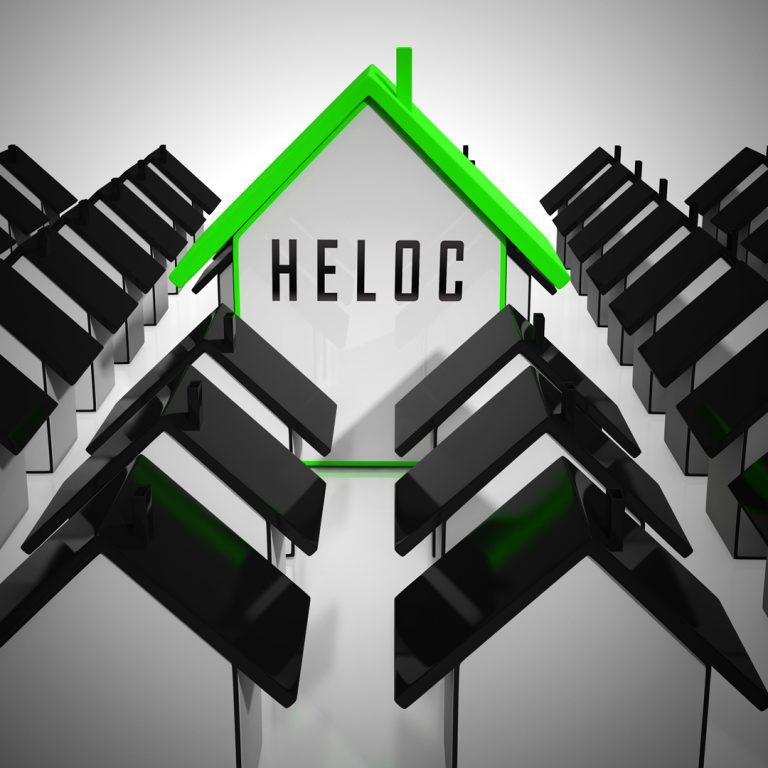Are you considering a home equity line of credit (HELOC) to fund a home remodel, college tuition or real estate investment? Before applying for a HELOC, be sure to familiarize yourself with the following terms, which we’ve divided into four categories:
1. Potential HELOC Fees
As you shop around for a HELOC, be sure to ask lenders if they charge any of these:
Annual fee: A maintenance charge (typically about $50 to $100 per year) some lender’s charge, whether the line is used or not.
Inactivity fee: Charged if you don’t use your HELOC for a given period of time, usually one year.
Transaction fee: Assessed any time you withdraw money from your HELOC.
(Quorum does not charge annual fees, inactivity fees, or transaction fees for our Second Lien HELOC; there is a $100 annual fee for our Investment HELOC)
2. HELOC Applications
Here are some terms you may encounter during the HELOC application and approval process:
Collateral: Property pledged as security for a loan. With a HELOC, your home’s equity serves as collateral.
Credit score: A calculation that weighs your repayment history, total outstanding debt, overall credit mix, new credits and the length of your credit history to gauge the likelihood that you’ll repay your loan or line of credit. Here’s a good article for improving your credit score.
Debt-to-Income (DTI): A ratio determined by dividing your total monthly debt payments by your total monthly gross income. DTI tells a financial institution how much of your monthly income goes toward debt obligations to see if you can repay the amount you want to borrow. Generally, a DTI equal to or less than 36% is considered good.
Equity: The difference between your home’s value and your total mortgage balances. (If your home is worth $500,000 and you owe $300,000 on your mortgages, you have $200,000 in equity.)
Fair market value: The price at which your home will sell given current market conditions. HELOC lenders typically use a new or recent real estate appraisal to help determine your home’s current value.
Fixed-rate product: A HELOC with a fixed rate means that the same fixed interest rate will apply throughout the life of the line of credit. (HELOCs are typically variable-rate loans.)
HELOC calculator: A tool for determining potentially how much you’d qualify for based on your home’s value and your outstanding mortgage balance.
Index rate: A benchmark interest rate that reflects general market conditions (such as the prime rate) to calculate the interest rate lenders charge on financial products, such as HELOCs.
Lien: A lender’s legal claim to property that secures a loan or line of credit enabling them to satisfy their debt, typically by foreclosing on the property, in the event the borrower does not repay the debt as agreed.
Loan closing: The signing of all necessary documents so that a lender can record its lien with the county recorder or register of titles in the county where the real estate is located. Pertinent HELOC closing documents include the mortgage (also known as the deed of trust), and the HELOC agreement. These documents include key details like your credit limit and interest rate.
Loan subordination: The placement of a lien in a lower rank or position. (This just means that in the event you fail to make your payments and the loan collateral is foreclosed upon, the lender in first lien position has the first claim to the collateral value of your home.) For more information about loan subordination, read our article.
Loan subordination agreement: An agreement to reorder lien positions. It’s most often required during a first mortgage refinance when the borrower has a second mortgage (like a HELOC), which would automatically become the first lien when the original mortgage is paid off in the refinance. The loan subordination agreement prioritizes the refinanced mortgage as the first lien and moves the HELOC back to second lien position.
Loan-to-value (LTV) and combined loan-to-value (CLTV): Ratios that lenders use to gauge their risk when you apply for a loan. For a first mortgage, lenders divide the loan amount by the property’s current market value to get an LTV, with 80% or less leading to easier approvals and better interest rates. HELOC lenders determine a CLTV. The loan (L) part of CLTV includes the balance of your primary mortgage and any other existing loans secured by your home plus your requested HELOC amount. CLTVs above 80% are typically considered high, meaning riskier for the lender. For more information on LTV and CLTV, read our article.
Margin: The number or percentage points that financial institutions add to the index rate to calculate your interest rate (i.e., margin plus index = rate).
Mortgage balance: The amount remaining on your home loan. It’s used to calculate CLTV when you apply for a HELOC.
Online application: An electronic way to submit all the required information needed to apply for a HELOC from the device of your choice.
Piggyback mortgage: A first and second mortgage that closes simultaneously. There are many reasons why borrowers decide to take out a piggyback mortgage. One popular example is to help borrowers who don’t have a 20% down payment to avoid private mortgage insurance (PMI). For example, a borrower buying a home for $350,000 could finance 80% ($280,000) of the purchase with a conventional mortgage by putting down 10% ($35,000) in cash and using a HELOC for the other 10%. To learn more about piggyback mortgages, read our article.
Prime rate: A type of index rate. Based on the federal funds rate, the base interest rate financial institutions use to determine what interest rates they will charge for their various lending products, with the rates closest to or at prime going to their most creditworthy customers. The interest rate charged on many HELOCs is the institution’s prime rate plus a designated margin. For example, when its current prime rate is 5% and its margin on a HELOC is 3%, your HELOC interest rate would be 8%.
Revolving line of credit: An open-ended credit line like a credit card or HELOC that lets you borrow up to your approved credit limit whenever needed. The available balance or credit limit is replenished as you pay back the balance of your account.
Second mortgage: A loan that is secured by some or all the remaining equity in the home, after the first mortgage is secured.
Variable rate product: A HELOC with a variable rate means that the credit line’s interest rate (index plus a margin) can move up or down in conjunction with the stated index, but typically only to a certain extent. The lender’s HELOC disclosure agreement will state how often the interest rate can change, potentially as often as once per month, as well as how low (the floor) or high (the cap) the interest rate can go.
3. HELOC Usage
Once you close on a HELOC, these terms become relevant:
HELOC checks: Provided by your lender as a way to access money from your HELOC. (An online transfer is typically another option.)
HELOC maximum: The maximum amount that you can borrow from your HELOC.
Interest rate ceiling: The highest the interest rate on a variable-rate HELOC can go.
Interest rate floor: The lowest the interest on your variable-rate HELOC can go.
Minimum initial withdrawal: A minimum initial advance that some lenders will require you to withdraw from your HELOC at closing.
Principal: The total amount borrowed from your HELOC that is currently outstanding, apart from any interest you owe.
4. HELOC Time Periods
HELOCS are divided into two periods:
Draw period: Typically anywhere between five and ten years, the time when you can take money from your HELOC up to your available credit limit. In many cases, you’re only required to pay interest during this period, something lenders refer to as an interest-only draw period. By making interest and principal payments during the draw period, you can pay down your debt faster.
Repayment period: After the draw period; this is the time when you can no longer borrow from your HELOC and you’re required to begin repaying both interest and principal on a monthly basis.
Now that you know the key HELOC terms, here’s a helpful article to help you determine if a HELOC is right for you!






Comments Section
Please note: Comments are not monitored for member servicing inquiries and will not be published. If you have a question or comment about a Quorum product or account, please visit quorumfcu.org to submit a query with our Member Service Team. Thank you.